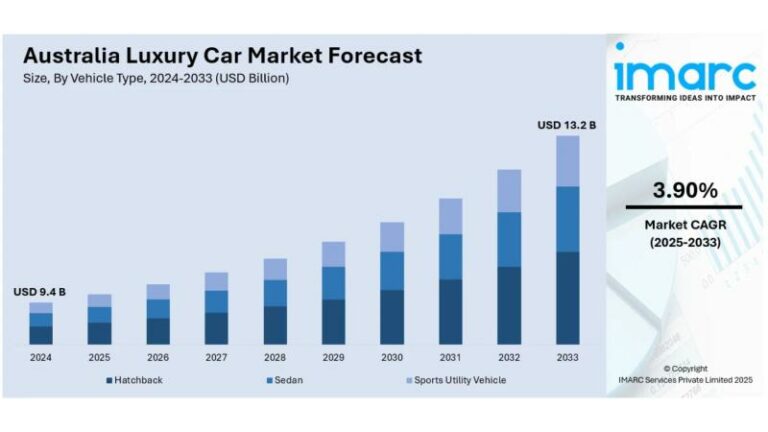Australia Luxury Car Market Projected to Reach USD 13.2 Billion by 2033
The Australia luxury car market is experiencing significant growth, driven by rising disposable incomes, evolving consumer lifestyles, and a strong preference for premium features. According to a recent report by IMARC Group, the market size reached USD 9.4 billion in 2024 and is expected to grow at a compound annual growth rate (CAGR) of 3.90% from 2025 to 2033, reaching USD 13.2 billion by 2033.

Key Drivers of Market Growth
- Increasing demand for premium features and advanced technologies
- Growing popularity of electric and hybrid luxury vehicles, supported by government incentives and expanding charging infrastructure
- Rising disposable incomes and evolving consumer lifestyles
- Expanding financing options and strong brand presence
Market Trends
The market is witnessing a shift towards sustainable mobility, with a growing demand for electric and hybrid luxury vehicles. Leading brands are expanding their electric vehicle portfolios, offering high-performance models with advanced features and zero emissions. Technological advancements, including improved battery ranges and fast-charging capabilities, are making premium EVs more appealing.
Market Segmentation
The Australia luxury car market is segmented by:
- Vehicle Type: Hatchback, Sedan, Sports Utility Vehicle
- Fuel Type: Gasoline, Diesel, Electric
- Price Range: Entry-Level, Mid-Level, High-End, Ultra
- Region: Australia Capital Territory & New South Wales, Victoria & Tasmania, Queensland, Northern Territory & Southern Australia, Western Australia
Recent Developments
- In February 2025, Genesis opened its largest retail space in Sydney and unveiled the X Gran Berlinetta Concept at Bathurst.
- In March 2025, MG Motor Australia announced plans to introduce its new luxury brand IM, showcasing advanced electric vehicle technology and elegant design.
The report by IMARC Group provides a comprehensive analysis of the Australia luxury car market, including market performance from 2019 to 2024, market outlook from 2025 to 2033, COVID-19 impact, Porter’s Five Forces Analysis, and strategic recommendations.



